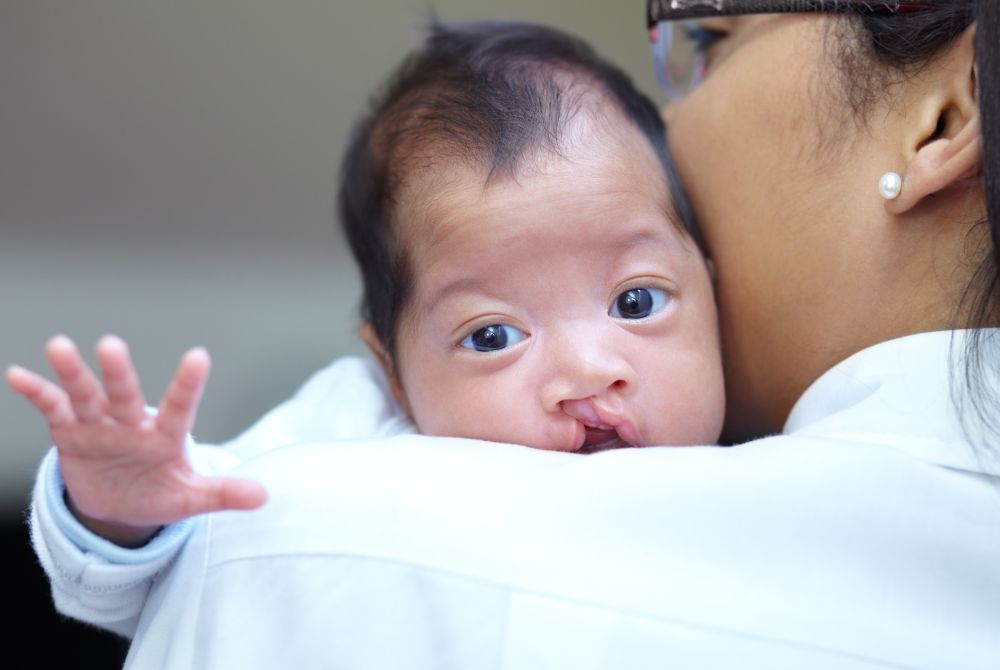
Introduction
Cleft lip and cleft palate occur naturally to newborns across many countries in the world. Birth defects happen when normal facial and mouth tissue of a baby fails to join together correctly during prenatal development. Parents and caregivers require knowledge of how cleft lips develop and why to make the right treatment choices. Thanks to new surgical methods, patients born with cleft lip and palate receive better working and more attractive results.
What is Cleft Lip & Cleft Palate?
We define Cleft Lip & Cleft Palate as a natural tear in the upper lip and the roof of the mouth that happens during fetal development.
A cleft lip forms as a physical disruption between the upper lip parts that can reach the nostrils. A normal closure of the mouth roof during pregnancy fails to occur, making the space remain open. A small number of people start life with cleft lip and cleft palate problems at the same time.
Difference Between Cleft Lip and Cleft Palate
- Cleft lip: Cleft lip describes the opening running through the upper lip that ranges from a tiny defect to the nostril border.
- Cleft palate: A cleft palate hole in the mouth roof affects both speech functions and oral eating, plus tooth growth development.
Cleft Lip and Cleft Palate Causes
Scientists cannot explain all cases of cleft lip, but they have discovered these known risk factors:
- Genetic factors: People born into families where cleft lip and palate have already appeared are more prone to developing this condition.
- Nutritional deficiencies: lack of folic acid during pregnancy.
- Environmental influences: Several medical products, such as smoking, alcohol, or medicines, may damage the baby's development when the mother uses them during pregnancy.
- Medical conditions: Diabetic and obese pregnant women have higher chances of causing cleft lip and cleft palate conditions in their babies.
Diagnosis of Cleft Lip and Palate
Doctor-timing evaluations permit more effective care preparation. Doctors identify cleft lip and palate issues in multiple ways.
- Prenatal ultrasound: Health professionals find most cases of cleft lip and palate during their normal pregnancy scans.
- Physical examination: After birth, a doctor can identify the cleft lip and cleft palate by physical examination.
Cleft Lip and Palate Surgery & Treatment Options
Treatment needs depend on how severe the condition is and require joint work from different medical teams who need to do cleft lip and palate surgery.
Cleft Lip Surgery
- The doctors conduct this procedure during the time window of 3 to 6 months of infant age.
- Repositioning the facial structures joins the partitioned parts and makes your appearance look better.
Cleft Palate Surgery
Bilateral Cleft Lip and Palate Treatment
Several operations are necessary to treat babies with cleft lip and palate conditions affecting both the upper lip and palate at the same time.
Additional Treatments
- Speech therapy: A speech therapist assists young patients in speaking correctly.
- Dental and orthodontic care: ensures proper alignment of teeth.
- Psychological support: boosts self-confidence in affected individuals.
Conclusion
Children need early treatment of cleft lip and palate to live without limitations. Knowing the specific features of cleft lip and cleft palate enables parents to select effective treatment options.
Contact Ovum Hospital to receive expert medical advice alongside total treatment services. Our medical team focuses entirely on treating both cleft lip and cleft palate conditions to help your child recover well from surgery. Book an appointment today!
FAQs
1. What makes a cleft lip different from a cleft palate in the mouth?
A cleft lip appears as an opening in the top lip area, and a cleft palate presents as an opening in the roof of the mouth.
2. Can health conditions that cause cleft lip and palate be stopped before birth?
Although each pregnancy has its own risks, it is possible to lower some risks when women take folic acid and stay away from dangerous substances before and during pregnancy.
3. How badly does cleft lip surgery hurt infants during treatment?
Doctors put patients under anesthesia and provide effective pain control through medicine following surgical procedures.
4. What results does current cleft lip and palate surgery produce?
Current medical procedures produce favorable results that help patients regain both their normal functioning and beautiful looks.
5. When cleft palate and cleft lip affect kids, what problems do they need to overcome?
Taking care of a cleft lip and cleft palate helps children overcome typical speech problems along with tooth and self-confidence issues.
.png?updatedAt=1705732823811)

.png?updatedAt=1693463514059)
